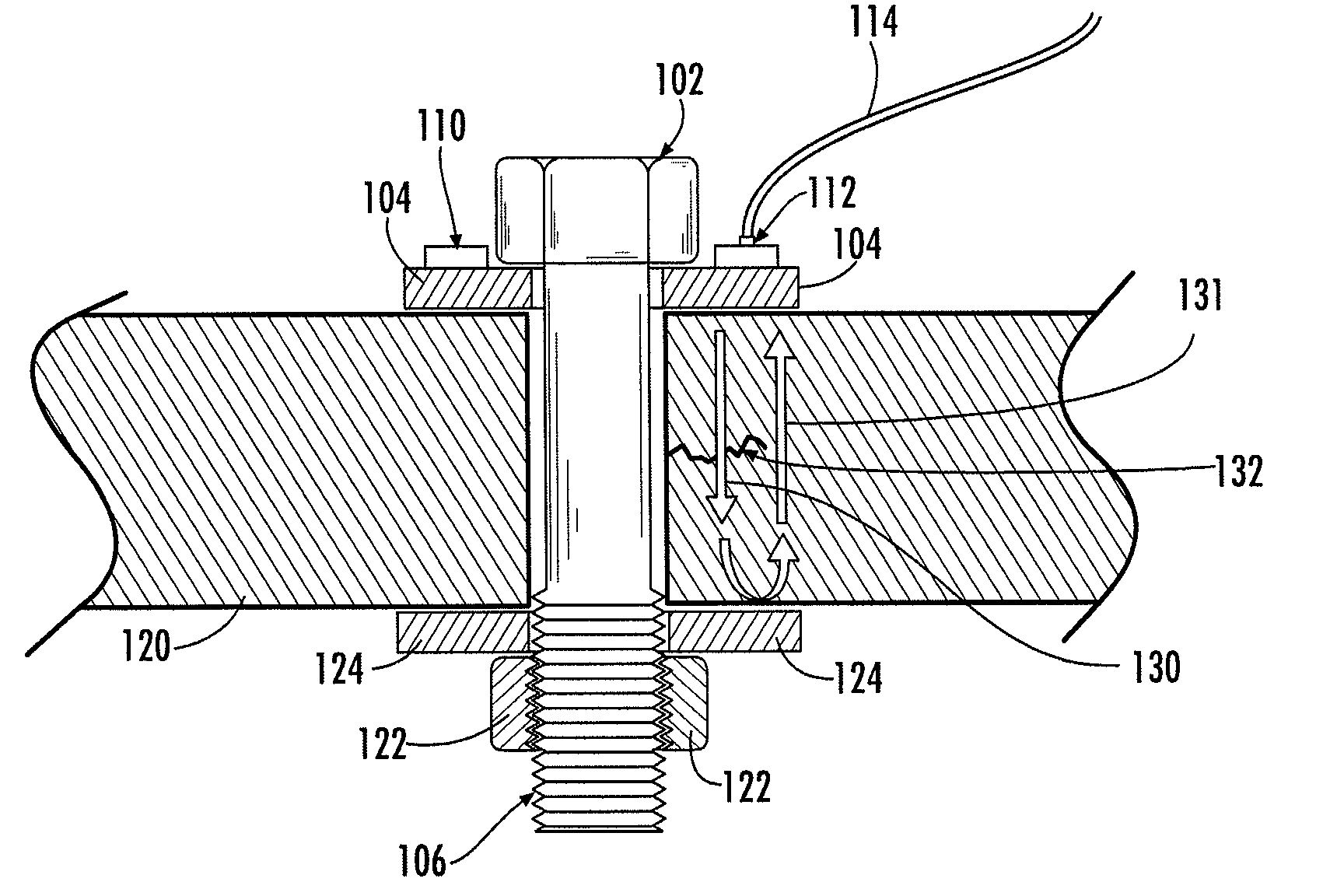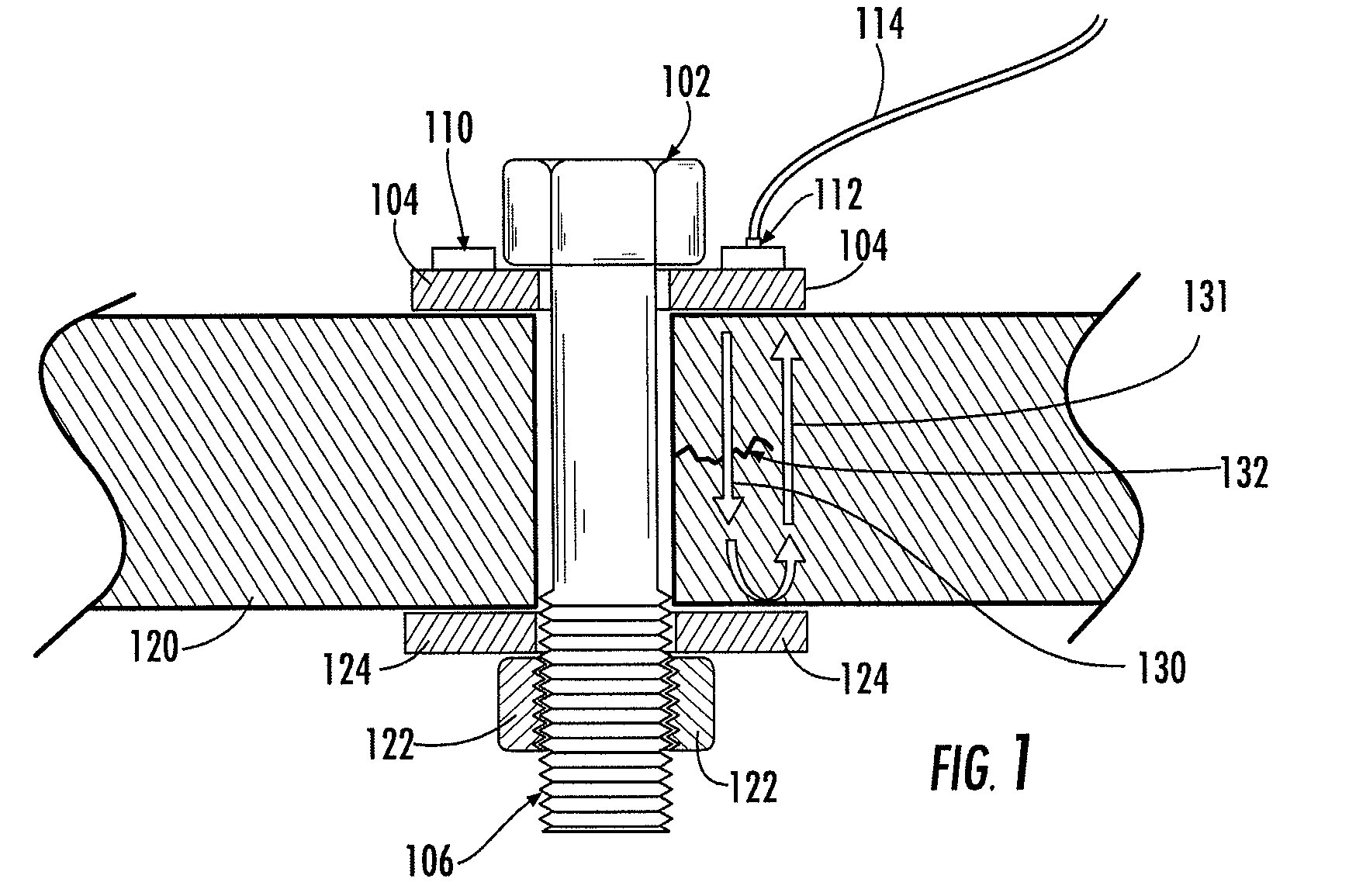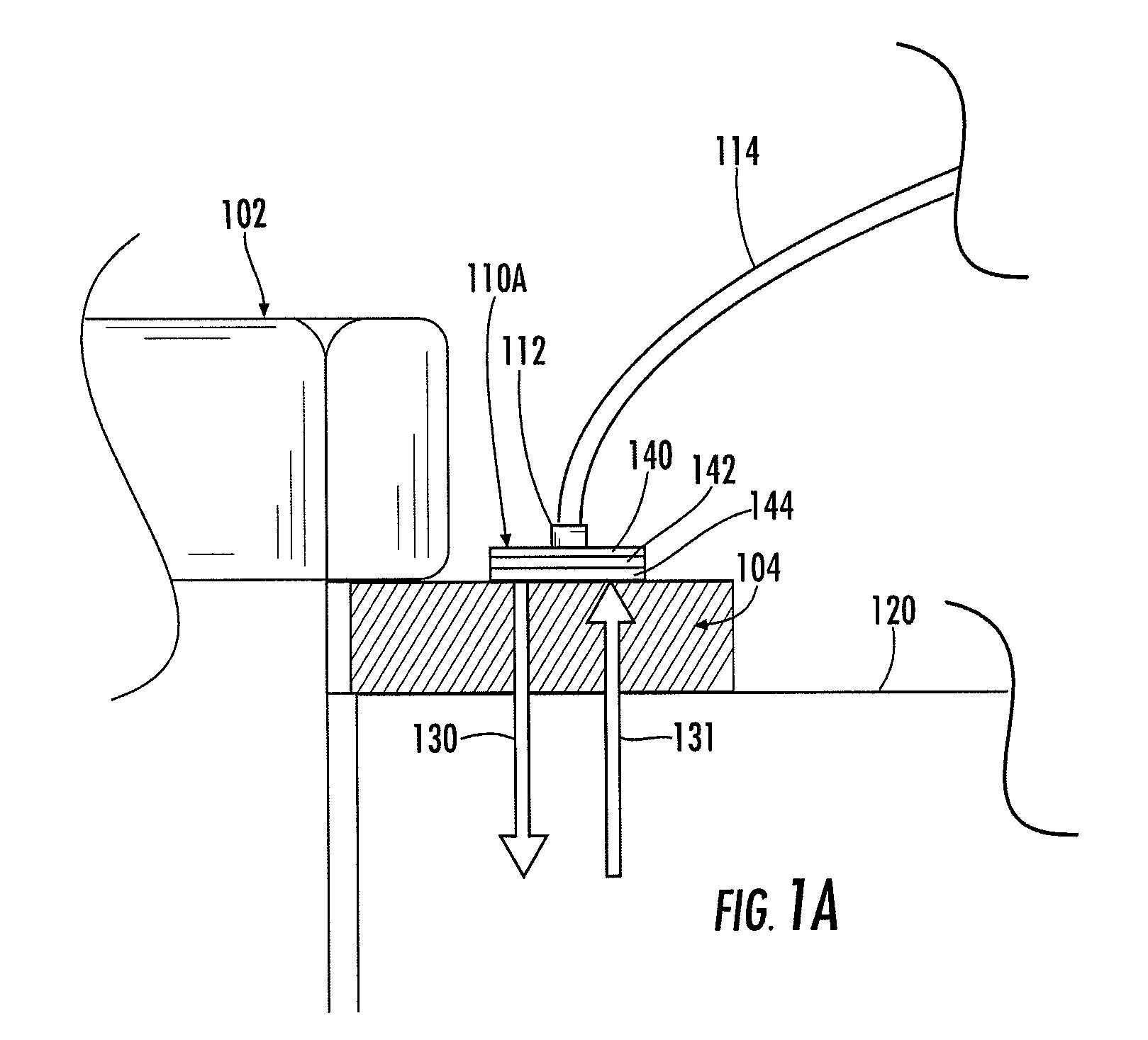Active washers for monitoring bolted joints
a technology of active washers and bolted joints, which is applied in the direction of apparatus for force/torque/work measurement, screws, instruments, etc., can solve the problems of introducing additional time and labor, large portion of overall maintenance costs, and reducing the overall required maintenance. , the effect of eliminating the need for disassembly and related labor intensive activities
- Summary
- Abstract
- Description
- Claims
- Application Information
AI Technical Summary
Benefits of technology
Problems solved by technology
Method used
Image
Examples
Embodiment Construction
[0021]The present inventions now will be described more fully hereinafter with reference to the accompanying drawings, in which some, but not all embodiments of the inventions are shown. Indeed, these inventions may be embodied in many different forms and should not be construed as limited to the embodiments set forth herein; rather, these embodiments are provided so that this disclosure will satisfy applicable legal requirements. Like numbers refer to like elements throughout.
[0022]The term “bolted joint” refers generally to a joint which is held together using a bolt and a nut or similar fastener on opposite sides of a structure, where the bolt passes through a bolt-hole in the structure. As used herein, a bolt also refers to similar fastening mechanisms which rely upon a connector passing through a hole in a structure and having expanded surfaces functioning like a bolt head and a nut on opposing sides of a structure. The bolted structure may be a single layer, or have multiple l...
PUM
 Login to View More
Login to View More Abstract
Description
Claims
Application Information
 Login to View More
Login to View More - R&D
- Intellectual Property
- Life Sciences
- Materials
- Tech Scout
- Unparalleled Data Quality
- Higher Quality Content
- 60% Fewer Hallucinations
Browse by: Latest US Patents, China's latest patents, Technical Efficacy Thesaurus, Application Domain, Technology Topic, Popular Technical Reports.
© 2025 PatSnap. All rights reserved.Legal|Privacy policy|Modern Slavery Act Transparency Statement|Sitemap|About US| Contact US: help@patsnap.com



